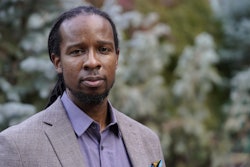Prior to the 1960s, the dominant paradigm was the assimilation paradigm, which espouses the values and beliefs of the white Western European culture and seeks to modify and suppress non-white, non European values.
The impact of assimilation at our colleges was quite evident in the paucity of scholarly materials and information produced by or about minority cultures. Very little recognition was given to scholarly works of individuals from other countries in Africa, Asia and Southern America.
The assimilation paradigm also minimized the contribution of people of color to the development of America. The 1960s to the 1990s has seen a gradual shift from the assimilation towards the diversity paradigm. The diversity paradigm’s focus is on appreciating and valuing the differences that individuals have, Government-mandated affirmative actions programs and the civil rights movement have been instrumental in creating programs that encourage equal opportunity and prohibit discrimination.
The shift towards the diversity paradigm has also been helped by the competitive global markets and an understanding of the advantages associated with effectively managing a diverse workforce. In institutions of higher education, it is now common to find courses that deal with African history and women’s studies. Afro-centric and Asio-centric world views are being presented. Greater attention is being paid to the recruitment and retention of minority faculty and students at predominantly white institutions.
Even though the diversity paradigm has led to substantial gains. It has some inherent limitations in that it tends to focus solely on differences among individuals. Focusing only on differences makes it difficult for individuals from different Cultures to effectively interact.
The increasing focus on differences therefore paradoxically leads to more divisiveness between individuals from different cultural backgrounds. The challenge for us now is to determine how to effectively maximize the advantages associated with the diversity paradigm and minimize its limitations. A New Paradigm: DiverSimilarity To address this challenge, we advocate shifting from the diversity to the DiverSimilarity paradigm.
The DiverSimilarity paradigm advocates the valuing and appreciation of the similarities and differences that individuals and communities have. The DiverSimilarity premise is that to effectively manage diversity, we must also effectively manage our similarities. This is the ultimate diversity paradox. An important aspect of the DiverSimilarity paradigm is the concept of similation. Given America’s history with the assimilation paradigm, it is important to distinguish between assimilation and similation. Similation points to the similarities and commonalties that individuals from diverse cultural backgrounds have. Similation celebrates similarities that individuals have without attempting to modify or change other cultures.
The following suggestions could he adopted when institutions operate under the DiverSimilarity paradigm. An ethnic studies course should be developed to teach students about the differences and similarities that individuals from different cultural backgrounds have. A separate and higher level course could also look at our “global village” and point to the uniqueness of America and the similarities across nations.
These courses should be required for graduation, Nonminorities and minorities need to appreciate the DiverSimilarity approach for effective interaction in a diverse national and global milieu. Another suggestion is for institutions to allocate more resources to expand ethnic studies. This will attract more scholars and students into these fields. It will also help minimize the perception that ethnic studies apply only to tile study of minority communities. It should also have a positive impact on the recruitment and retention of minority students.
Institutions of higher education need to rethink the role they must play in helping resolve the challenge of improving race relations. The current diversity approaches fall Short Clue to the focus on differences only. Taking the DiverSimilarity approach will help continue the slow but necessary shift to a nation where people are not judged by the color of their skin but by the contents of their character.
Dr. Joseph Ofori-Dankwa Dr. Joseph Ofori-Dankwa is president of the DiverSimilarity Consulting Group and an associate professor of management of Saginaw Valley State University.
Dr. Ralph Bonner Dr. Bonner is presently director of the Office of Affirmative Action Compliance and Monitoring, and senior advisor to the President (It Michigan State University. He is also a professor in the School of Criminal Justice in the College of Social Science at Michigan State.
COPYRIGHT 1996 Cox, Matthews & Associates
© Copyright 2005 by DiverseEducation.com


















